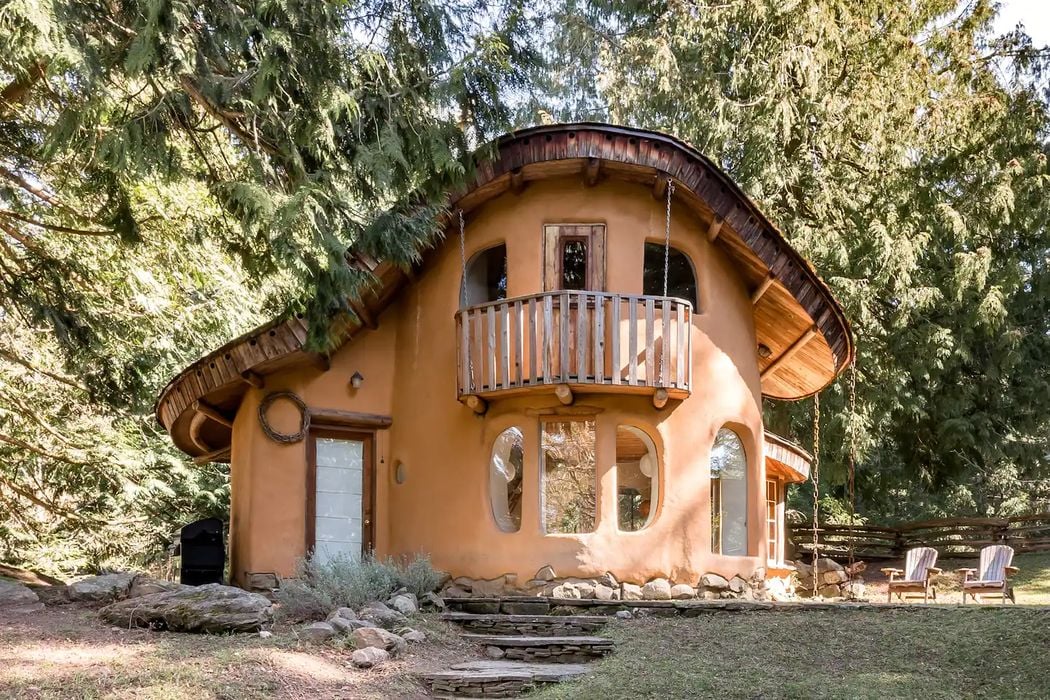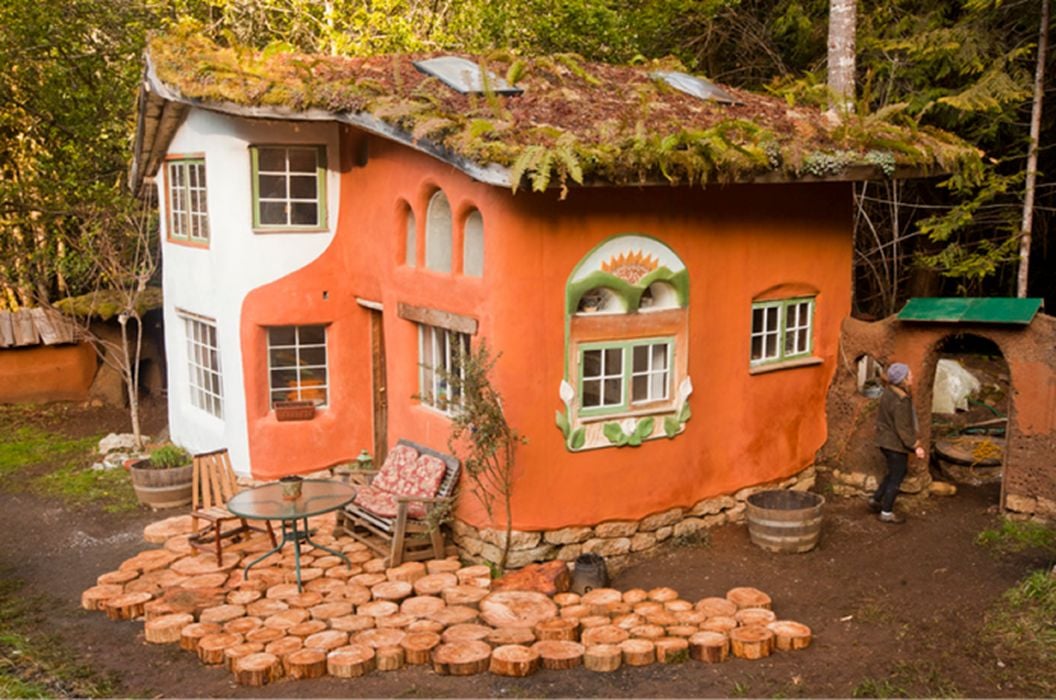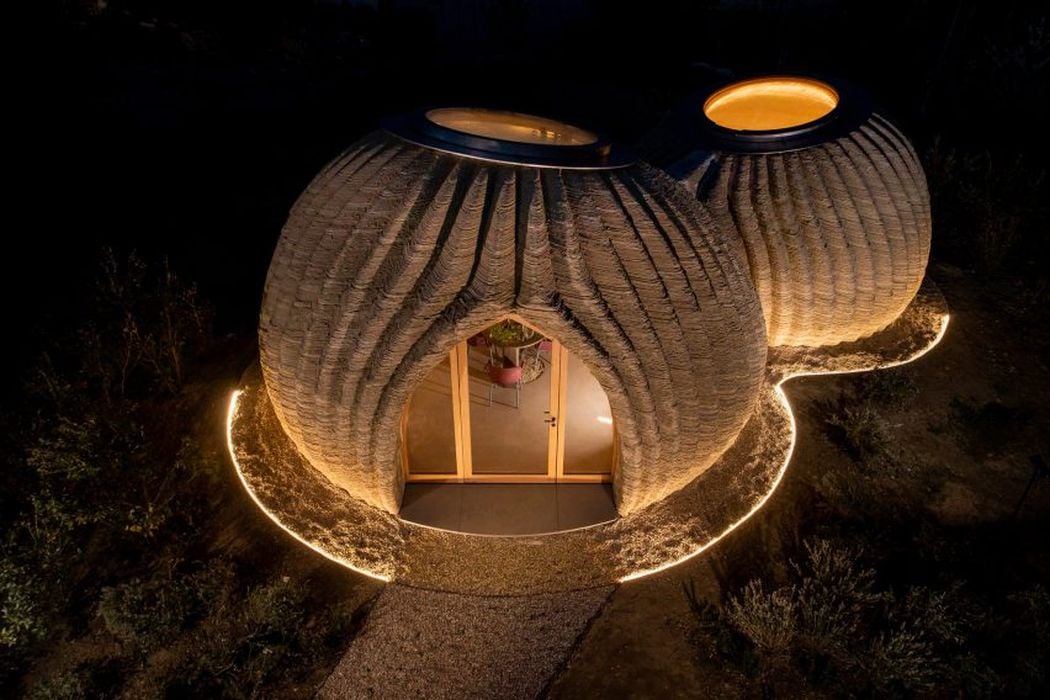
Charles R. Goulding and Preeti Sulibhavi delve into the resurgence of cob houses, exploring their sustainable design, modern applications, and the role of 3D printing in transforming this ancient building technique.
A cozy house with a white picket fence, close to nature yet equipped with modern amenities. While this may seem like a dream to many, it may be one that can actually come true.
Cob houses go back thousands of years, but they are seeing a true renaissance, particularly in Europe and some parts of Africa. Cob houses are usually curved with arches and organic shapes.
The term “cob” refers to the building material and technique used to create houses and other architectural structures. Cob is made from a mixture of sand, clay, and straw. When mixed with water, these elements create a natural and durable building material that can be used to build walls without synthetic components.
Cob houses were very popular in England during the 19th century since the straw made it very insulating during cold winters.
Despite the initial impression for many, cob houses are long-lasting, durable, affordable, sustainable, fire-resistant and cozy. Much like a cottage house, cob houses are quaint and provide a cozy environment that is natural and a unique place to call home.

We see this ancient form of architecture as something that can be applied to today’s world, especially as we strive to reduce our carbon footprint and use more eco-friendly methods of manufacturing and construction.
While there are many benefits associated with cob houses, there are some drawbacks as well. Cob houses are prone to water damage and flooding. In addition, permitting may be an issue as many urban and suburban zoning requirements have not approved cob houses for many building codes and regulations.
While still gaining traction (and approval) in many parts of North America, this style of house has become more popular in some parts of the US, like Oregon, which even now has a style called the “Oregon Cob.”
Cob Houses and 3D Printing
A substantial share of recent research on 3D printing for construction addresses 3D printing of cement and mortar-like materials. As a result, there has been a huge development in 3D printing systems for cement-based materials in recent years Yet despite these developments, 3D printing of earth-based materials, such as cob, still presents several challenges to the market-available 3D printing systems such as material granularity, material properties and mix ratios, or the use of local organic fibers, which must be addressed through extensive experimental research before delivering a feasible construction method.
Following early studies of cob 3D printing technology the sensitivity of the printing process to the material mix is currently a major limiting factor in the development of industry-scale 3D printing with cob. The hardening property of the material mix creates a critical constraint on the speed of the 3D printing. The interrelation between hardening time and printing velocity must be monitored carefully, as each printed layer must be hard enough to support the weight of the successive layers. In addition, the effects of specific geological, environmental or geographic conditions on the quality of 3D printing cob mix, must be ascertained.
One of the major issues with 3D printing of such materials is to balance between the fluidity level and sufficient viscosity simultaneously in a way to ensure the smooth flow of material through the extrusion system without clogging while maintaining the extruded material shape during the printing process. In concrete 3D printing, the developed mixtures should have high yield stress and low viscosity.
In earth construction, the rheology of the material is the key to controlling the quality of the structures. Historically, adjusting the consistency of cob mixtures depended greatly on the on local methods of construction, simply through controlling the water-to-soil ratios, or by adding other ingredients such as fibers or lime. As the construction industry shows a growing interest in earth materials by utilizing 3D printing, the need to develop simple and rapid testing for estimating earth material workability and rheological properties has increased.

Cob stands as one of many types of earth construction methods and it has been utilized historically all over the world. Its mix consists of subsoil (earth), water, and fibrous material (typically straw). However, like green concrete construction methods, cob buildings embody a material mix, as well as its associated construction method. This form of 3D printing construction is still in development, although cob houses date back thousands of years.
The Research & Development Tax Credit
The now permanent Research & Development Tax Credit (R&D) Tax Credit is available for companies developing new or improved products, processes and/or software.
3D printing can help boost a company’s R&D Tax Credits. Wages for technical employees creating, testing and revising 3D printed prototypes can be included as a percentage of eligible time spent for the R&D Tax Credit. Similarly, when used as a method of improving a process, time spent integrating 3D printing hardware and software counts as an eligible activity. Lastly, when used for modeling and preproduction, the costs of filaments consumed during the development process may also be recovered.
Whether it is used for creating and testing prototypes or for final production, 3D printing is a great indicator that R&D Credit-eligible activities are taking place. Companies implementing this technology at any point should consider taking advantage of R&D Tax Credits
Smurf Villages Come to Life?
Cob homes have a quaint aesthetic with eco-friendly attributes that make them particularly compatible with younger populations as well as for 55-plus communities, where the homes tend to be uniform and have fewer floors (to accommodate the mobility issues some seniors have). There are certain challenges to constructing them and acquiring zoning permits, but they are one possible solution to creating eco-friendly housing at affordable prices and 3D printers are increasingly being used in the construction process.
For those of you who recall watching “The Smurfs,” cob houses may seem like something Papa Smurf or Gargamel would live in, rather than being an actual home to human families. While there are some structural challenges, Cob homes are in fact gaining traction as a sustainable solution to the global housing crisis we face today.
